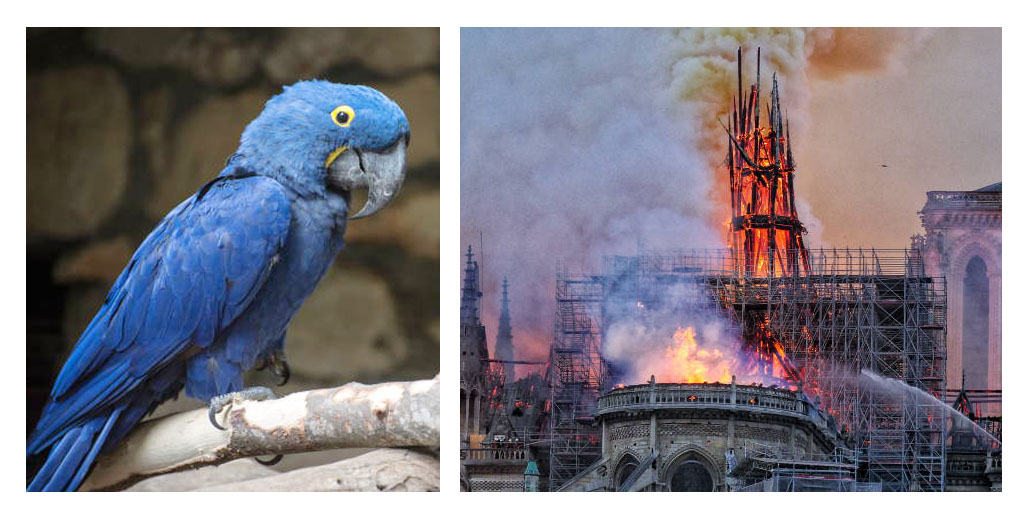
The burning of Notre Dame is a devastating blow to the heart. I gasped when I first saw the images of the burning spire, and every time my thoughts turn to this historic loss, I feel shock, sadness and grief. How can this be? I stretch to grasp the loss. This is not only the heart of France, it is a world heritage site for humanity — the flower of Western Civilization built over many successive generations over hundreds of years. Through the internet, people around the world are feeling a synchronous wave of emotion. This morning, as the first views of the interior come across our screens, we feel a relief that all is not lost, and rise with hopes that it may be restored.
And now I wonder about the Spix’s Macaw blue parrot, the Northern White Rhino, and a rare porpoise — all close to or completely extinct in the wild. Do we come together in collective grief? How many even know of their fate? Let alone 1,000s of other species that are not as glamorous as these poster children of the animal world? I read that the Earth is losing animal species at 1,000 to 10,000 times the natural rate. We feel the impact of the fire of Notre Dame because it is immediate and dramatic. We grieve at the loss of 850 years of cultural heritage. How can we feel the loss of millions of years of natural heritage that slip away without notice over longer time frames, yet are quantum levels more devastating? What will it take for humans to come together to feel this loss and rise in a collective call to restore the web of life?
—Ross Chapin

